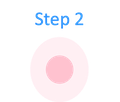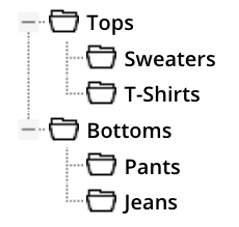 | In order to import the hierarchy from your ERP, you'll need to create and manage each of the individual classification hierarchy levels. To create the hierarchy shown here, you must create the top levels first and then the lower (sub)levels. |

There are three possible steps to ensure that your classifications are imported correctly:
- Create new classifications
- Modify existing classification data
- Delete existing classifications
Create Classifications
To create classifications, you must know where in the hierarchy it will be located and define its unique code and identify its parent classification's unique code. You can also include attributes for the classification and specify its data language.
| URL Parameters | |||
| Endpoint | /classifications | API v4 endpoint 🚧 This endpoint is unitary and creates a single resource at a time, in a single data language. To specify content in a specific data language, you must use the | |
| HTTP Method | POST | ||
| Query Parameters | |||
target_culture | string | Code of the data locale. | |
| HTTP Method | PUT | API v4 endpoint 🚧 This endpoint is unitary and modifies a single resource at a time, in a single data language. In order to specify content in a specific data language, you need to use the | |
| Query Parameters | |||
code | string | Current unique code of the classification to update. | |
| API v4 endpoint | |||
| HTTP Method | DELETE |
API v4 endpoint | |
| Query Parameters | |||
code | string | Unique code of the classification to delete. | |
Example
import requests
url= "https://{{YOUR-PIM}}.quable.com.quable.com/api_1.php/classifications/subfamily_12"
headers= {
'Content-Type': 'application/json',
'Authorization': 'Bearer ...'
}
response= requests.request("DELETE", url, headers=headers)